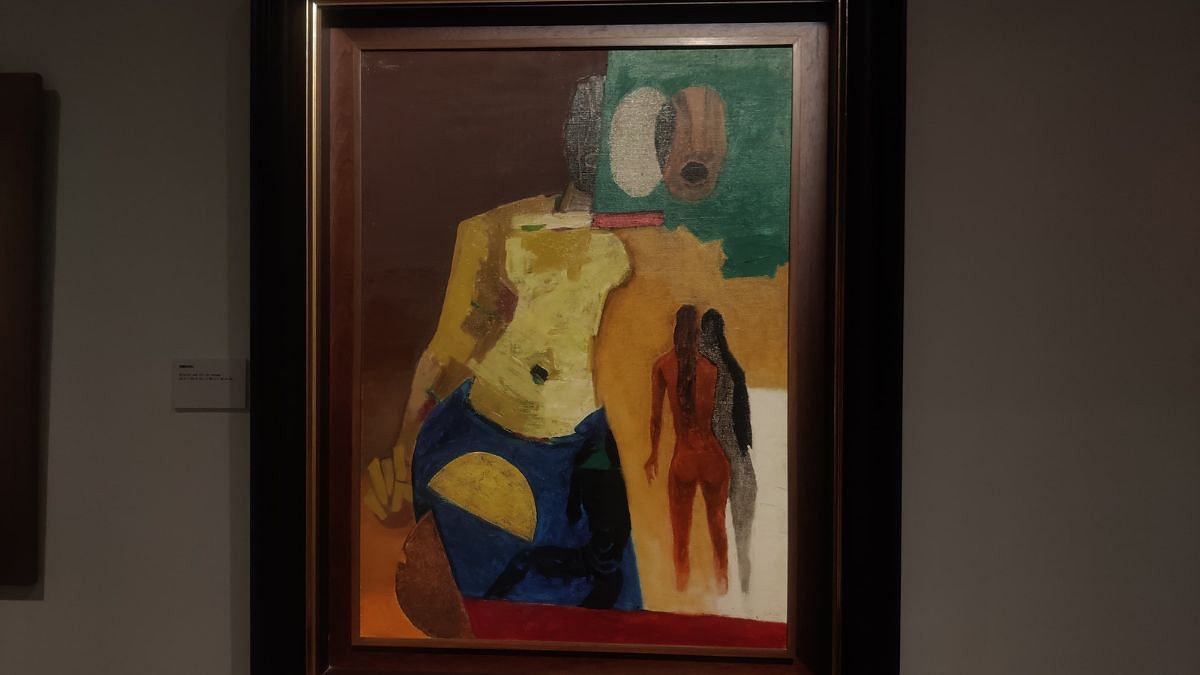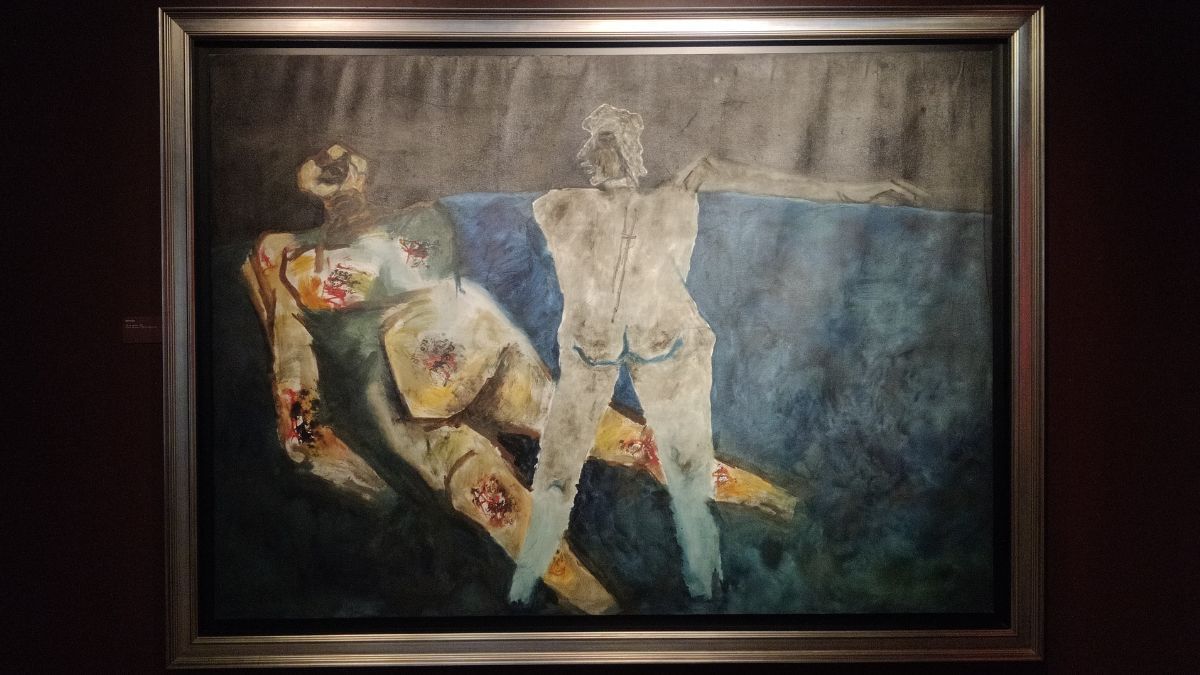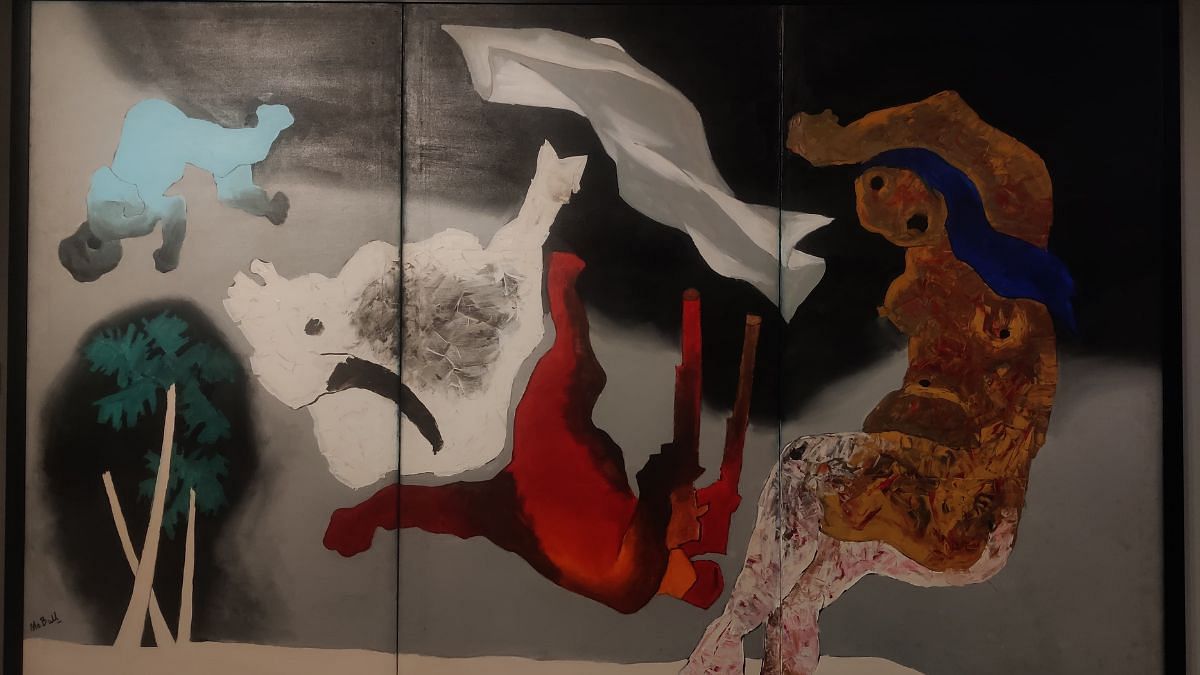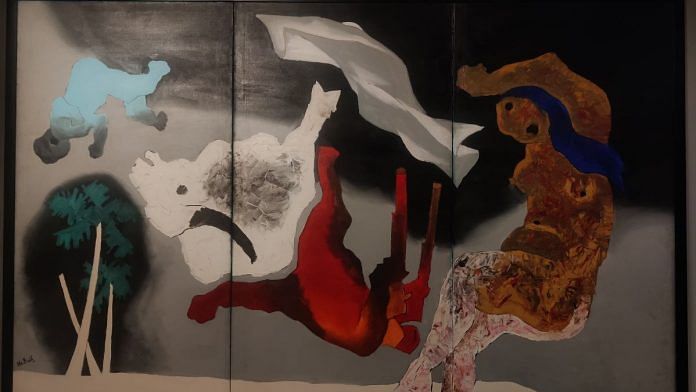New Delhi: Just two decades ago, art galleries were too fearful to display their prized MF Husain paintings. Security guards policed artworks tucked away behind curtained enclosures.
Now, 13 years after MF Husain’s death, the controversies have exhausted themselves. His truth is out for all to see.
And that truth is an unfiltered and unsparing critique of all that he lived through. It is a love letter to India, and also a report card.
The exhibition Husain: The Timeless Modernist at DAG, Delhi, fearlessly revisits his paintings more than a decade after his death, celebrating art that is finally safe. This is the largest exhibition ever dedicated to the artist, encompassing nearly six decades of his creative output. Featuring over 115 pieces, it showcases the key themes that defined Husain’s artistic journey from the 1950s through the 2000s. His works, known for blending subtractions and additions to yield obscure solutions, often explore themes of religion and philosophy, now presented with fine wine and rarefied conversations.

In a dreamscape suspended between life and death, MF Husain’s haunting canvases explore incompleteness and the liminal spaces between life and death, sleep and consciousness. Faceless figures and bold, half-formed circles emerge from earthy tones, hinting at unfinished identities; every geometrical form feels like a piece of a fractured self.
In August 1988, during a hospital visit, Rajiv Gandhi asked MF Husain about his feelings on being unable to paint. Husain replied, “Wish one could sit on one’s bed, push a button, and paint.” When Rajiv countered, “Wouldn’t the painting become mechanical then?” Husain responded, “No, because it is the mind which would instruct the hand.”
Also read: MF Husain, the bold & prolific artist who started his journey painting movie billboards
Religions through Husain’s lens
In 2008, the Delhi High Court quashed three criminal cases against MF Husain filed after complaints about his nude painting, Bharat Mata.
“A painter at 90 deserves to be in his home—painting his canvas,” said Justice Sanjay Kishan Kaul. However, this judgement left the Indian artistic community struggling to celebrate the artist who defined modernity for generations.
A devout Muslim, Husain embraced the richness of diverse cultures and faiths in a series called Theorama, creating numerous works inspired by the Ramayana, Mahabharata, the Battle of Karbala, Sikh literature, and Christianity. For Sikhism, he portrayed a warrior on horseback in bold earthy tones, capturing the valour and devotion that echo Sikh history’s courage and faith. Christianity is depicted through shrouded figures around a body, reflecting themes of sacrifice, compassion, and resurrection. His portrayal of Islam uses a worshipper, a red orb, and a black square to convey devotion, unity, and the Kaaba, with touches of green for peace. There is also a representation of the supernatural horse, Buraq.

In a painting from Husain’s Mahabharata-inspired series, Draupadi lies wounded, stripped of dignity, as Dushasana clutches at the edge of her blue saree, tugging in an act of cruel defiance. With his choice of sombre, shadowed hues, Husain brings the scene’s intensity to life, stripping both Draupadi and Dushasana of a hand—a subtle but jarring detail. This missing limb in Draupadi’s figure signifies the dehumanisation and helplessness forced upon her, representing how power was snatched from her at that moment. Dushasana, too, is one-handed, depicting him as a limited force capable of brutality but ultimately overpowered by Krishna. The blue of Draupadi’s saree hints at divine intervention—the unseen hand of Krishna extending the cloth to shield her honour, a higher power quietly embedded in the paint.
“Husain’s art, rooted in his admiration for India’s heritage, celebrated the syncretic beliefs of Indian society. His imaginative interpretations of mythology enriched the nation’s soul and resonated deeply with art lovers,” Ashish Anand, CEO and Managing Director of DAG, told ThePrint.
Also read: Hyderabad’s CCMB was called Sheraton of science labs. MF Husain was its artist-in-residence
The politics of Husain-ism
The charge that MF Husain was political and deliberately anti-Hindu gained ground over three decades. He was an artist living through turbulent times, and his paintings brought those experiences to alive.
He grappled with riots, mindless violence, and hatred, wrapping himself in the solace of colours and brushstrokes, emerging with canvases that scream, mourn, and ultimately express what words could never contain.
“If art is not connected to society and a reflection of its time, can it truly be art?” Anand told ThePrint, highlighting that art derives meaning from its context—through the subjects an artist chooses, the materials they use, or the legacy they leave behind. “Even the Bengal School, with its romanticised aesthetics, had politics and nationalism at its heart—it was a rejection of colonial pedagogy.”
Husain captures the nightmarish distortion of Assam’s Nellie massacre in 1983 in one of his grim and powerful paintings, where a horned cow lies suspended upside down, defying natural order, while the body of a woman is flung to the side as if tossed by an unseen, violent force. This unsettling image reflects what Husain called the Massacre of the Innocents.


In another painting created in 1992, he tells a story of human suffering and unrest through bold, fractured symbols. Red paint spills at the bottom, evoking blood—the raw aftermath of violence. Tall sticks pierce through the scene, suggesting weapons used in brutal crackdowns. Amid this chaos, distorted human figures appear incomplete and shattered, speaking of lives torn apart by communal violence. At the heart of the scene, a tiger-like form lurks, representing untamed aggression.
“The world calls his works political, but he’s not making anything political—he’s representing the times around him. To depict hunger and riots is not political. He’s a painter of the people, a painter of his times,” said a docent during a gallery walkthrough.
Husain left India amid hundreds of legal cases, virulent abuse, hate speech, assault, and a climate of fear. From 2006 until his death in 2011 in London, he longed to return to his homeland.
“Now that the artist is gone, the hate is gone too,” said a viewer at the exhibition opening.
(Edited by Prashant)







The article, quite ironically, captures Hussain’s attitude towards Hinduism. He chose to portray Sikhism through an earthy warrior on a horse representing the ideals of the faith. Similarly positive was his representation of Christianity and his own faith Islam. But for Hinduism, he chose naked goddesses as if that’s the essence of the religion. Speaks volumes about his understanding of Hinduism.
In the world of art, it’s easy to get away with such denigration of a faith. Because anyone criticising the artist gets labelled as a fanatic.
Charity starts at home. Hussain should have imagined Islam’s cherished mother figures naked first before moving on to mock or ridicule people of other faiths.
Ms. Sakshi Mehra’s disingenuous attempt at justifying Hussain’s bigotry towards Hindus boomerangs.
To understand Hinduism, one has to study the Bhagavad Gita and the Upanishads. Naked goddesses are no more a representative of Hinduism than scheming Shylock is of Judaism.